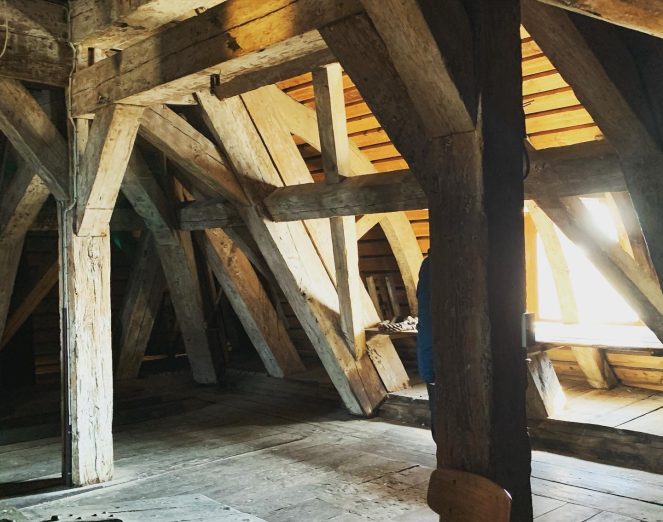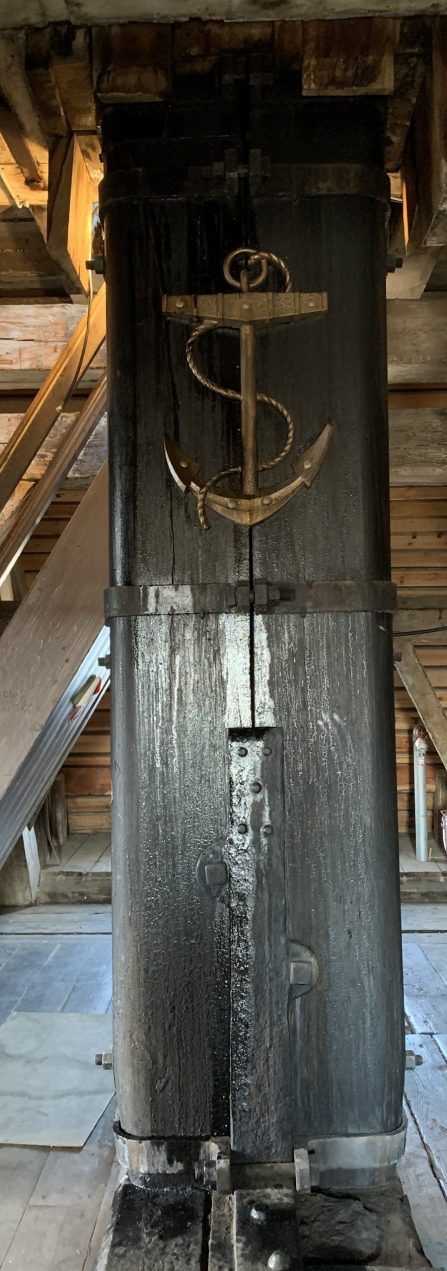The Mast Crane
The Mast Crane was build during 1749 – 51 after drawings by building constructor Philip de Lange.
What is the scare of the mess boy, and why are the windows not alike?
Get wiser on a guided tour in the Mast Crane.
It's like a trip into the aera of King Frederik the 5th

The window in the crane at 4th floor

Outstanding woodwork from Pomeranian pine and oak tree

The continuous wooden column, here marked with an anchor
The Mast Crane on Holmen
The last of the kind in Denmark
The Plan Building is joined to the Mast Crane.
Many people say, that King Christian the 4th ordered it build, but it is not correct, It was King Frederik the 5th. King Christian the 4th had many buildings erected in Copenhagen, but he had nothing to do with the Mast Crane or Holmen.
King Christian the 4th died in the year 1648, and Holmen was founded in 1680. In 1749 the construction of the Mast Crane was commenced – that is more than 100 years after the death of King Christian the 4th.
An impressive timber construction
The architect of the Mast Crane is constructor Philip de Lange The crane is built only of wood and cordage, and the brick wall around it is only a shell to protect the woodwork against the weather.
When entering the Mast Crane building one can sense the fragrance of pure wood and tar. The woodwork is made of Pomeranian pine and oak wood, and metal was never used in the construction of the crane. EVERYTHING is built of wood and by hand, which demanded precision and great calculation skills to build. If one looks up at the outrigger, one can see that it apparently is tied together with tarred ropes.
And that’s was what it was earlier, partly to make the crane more elastic and partly to hinder iron bolts from weakening the woodwork. Today the outrigger has been enforced with steel bolts under the ropes.
The scare of the mess boy
When there was a storm warning a flag was hoisted during the day and a red lantern during the night from the top of the crane It was the mess boy’s task to climb the outrigger and hoist the lantern.
This usually took place during strong winds and sometimes even rain. That is why the crane was called "the scare of the mess boy"
The crane "belonged" the the able seemen, and was ment to be used to careening the ships, placing the masts a.o. On the island Christiansholm there had been a similar crane. This crane was used by the artillery. This crane was removed back in 1867.
Contact info
Address
Museet Skibene på Holmen
Elefanten 2
1439 København K
CVR.: 18536048
Telephone
+ 45 32 57 13 16